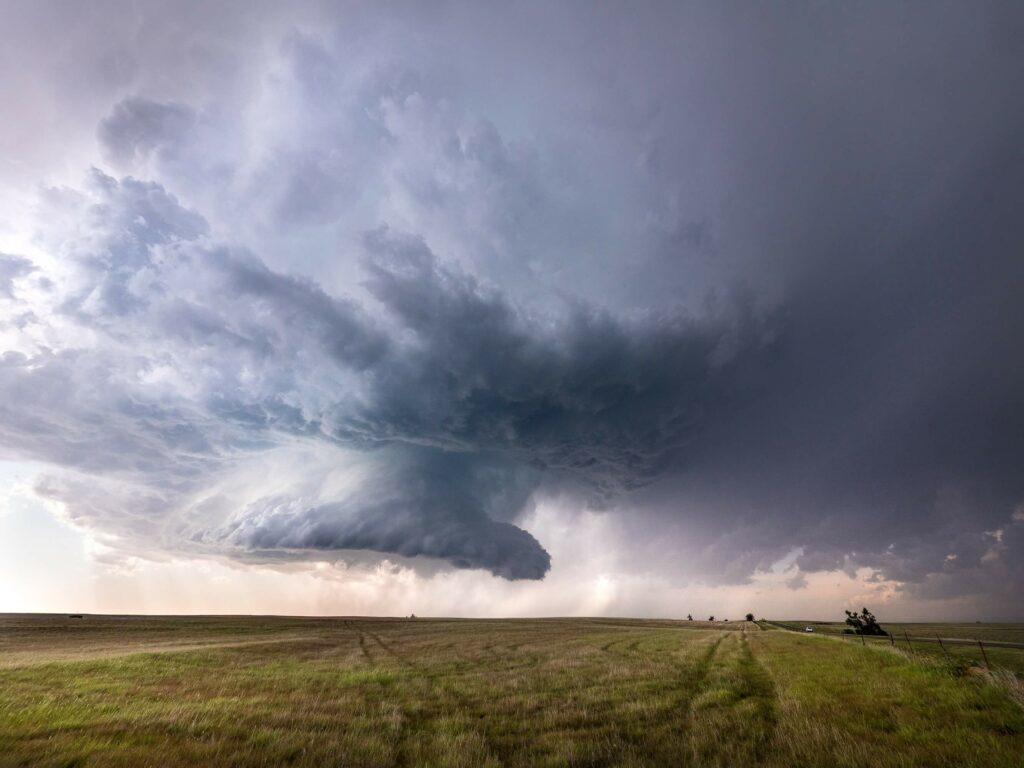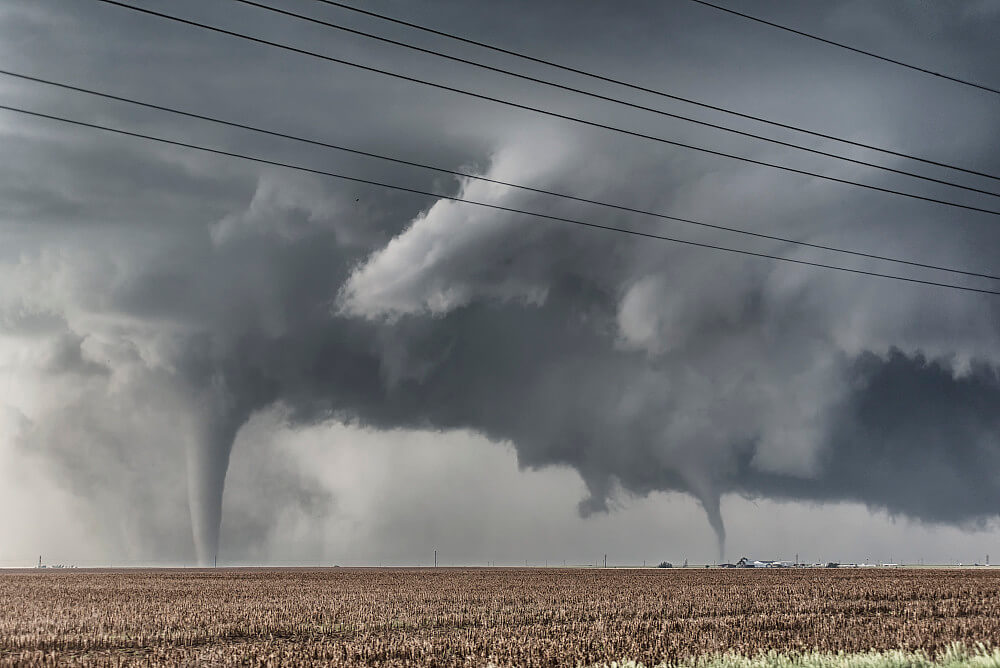Tornadoes are fascinating weather events that scientists still do not know very much about. They occur all over the world in places such as Australia, Europe, and Africa, but mostly in the United States.
These sometimes brutal events can spawn out of seemingly nowhere in just a matter of seconds, and also disappear in the same amount of time.
Oftentimes tornadoes only last for a few minutes before they lose power and fade, but larger tornadoes last for over 20 minutes, and sometimes multiple hours.
Today, we’re going to answer a question that many of our readers are eager to learn the answer to. Can tornadoes change direction?
In a nutshell, yes, they certainly can. Tornadoes can change direction mid-path and even move backward or double back suddenly, making them incredibly unpredictable and dangerous.
Can Tornadoes Really Change Direction?
Tornadoes are not always predictable as some people think. They are capable of rapidly changing directions as they do not follow a specific path or route.
This means that the only safe place to be when a tornado hits is in a shelter underground that offers protection from high winds and debris.
Many tornadoes switch directions during their travels, which is why it’s not safe to be around a tornado at all and why storm chasing is so dangerous.
Can A Tornado Reverse Direction?
It is certainly possible for a tornado to travel in reverse or double back on itself if the conditions allow for this maneuver.
When a tornado moves in reverse it’s often because the bottom of the vortex is hit by outflow winds from the thunderstorm’s core, causing it to be pushed backward.
On some occasions and usually, slow-moving tornadoes can start to move in loops because of this, which means that some areas can be hit by a tornado twice.
Not only does this cause massive devastation to the city or landscape that has been affected, but it can also be incredibly dangerous for the residents that think the tornado has passed.
What Causes A Tornado To Change Direction?
Tornadoes can change direction because when storms get stronger because of wind shear, winds at higher altitudes move faster and in a different direction than winds at lower altitudes, this causes a shift.
This shift can make the tornado tilt and rotate. When wind speeds change sharply the tornado can change direction and begin to move in a different path.
That said, some areas in the US tend to have more specific paths for tornadoes, such as Northwest in Minnesota or Southwest in Coastal South Texas.
This is down to an increased frequency of certain tornado-producing weather patterns, but tornadoes certainly can divert off these predicted paths.
These paths are more so used as a guide and an indication as to what towns are likely to be hit and which homes need tornado shelters and evacuation procedures.
Are Tornadoes Directional?
Whilst tornado movement patterns are hard to predict, we do know which direction wind speeds rotate depending on the geographical location.
For the most part, most tornadoes in the Northern hemisphere rotate cyclonically, also known as counter-clockwise.
Only around 5% of tornadoes in the Northern hemisphere rotate clockwise. Whereas in the Southern hemisphere, most tornadoes rotate clockwise.
In some incredibly rare cases, meteorologists have documented cases of both cyclonic and anti-cyclonic tornadoes at the same time under the same thunderstorm.
So why do tornadoes rotate differently depending on the geographical location?
Well, this has everything to do with the Coriolis effect, which can be very hard to understand so I’m going to try to explain it simply.
Essentially, the Earth’s rotation around its axis causes winds in the Northern hemisphere to deflect to the right, whilst winds in the Southern hemisphere deflect to the left.
The Coriolis effect doesn’t affect all of Earth’s circulatory systems, only the largest atmospheric and oceanographic circulation systems, such as Hurricanes, the Gulf Stream, and Jet Stream.
Final Thoughts
Can tornadoes change direction? Yes, absolutely. Tornadoes are unpredictable weather events that can change direction in an instant.
This makes them unpredictable and very dangerous, and for this reason, it’s important never to get too close to a tornado as things can change incredibly quickly.
Some tornadoes move across the landscape at speeds of up to 30mph, and oftentimes there is a backlog of traffic in the area because of the event.
The best course of action if a tornado is anywhere near you or your home is to seek shelter immediately.
Tornadoes have even been known to loop in circles, sometimes hitting and devastating the same towns multiple times.
They can move forward, backward, side to side, and in just about every direction you can possibly think of.
Thanks for taking the time to read this post and I hope you’ve learned something new today about tornadoes changing direction.
If you have enjoyed this post, feel free to stick around to learn more about tornadoes and the other extreme weather phenomenon that we discuss here.

Hey, I’m Sam – the founder of GustyPlanet. I’ve had a fascination with all things weather for as long as I can remember. I witnessed my first tornado at the age of 6, and since then became an avid storm chaser that is hooked on learning as much as I can about extreme weather. This blog was created to share my knowledge and to expand and delve deeper into the wonderful world of weather phenomena. I hope you enjoy your stay here and thanks for visiting.







